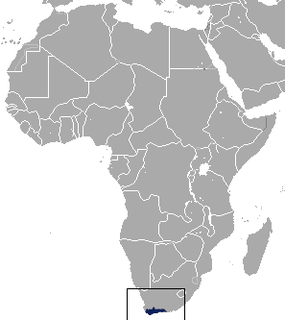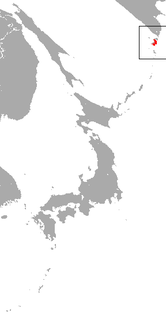
The Angolan kusimanse, also known as Ansorge's kusimanse, is a species of small mongoose. There are two recognized subspecies: C. a. ansorgei, found in Angola; and C. a. nigricolor, found in DR Congo, which do not have overlapping ranges. It prefers rainforest type habitat, and avoids regions inhabited by humans. It grows to 12–18 inches in length, with a 6–10 inch long tail, and weighs 1–3 lb. Little is known about this species of kusimanse, and there are no estimates of its wild population numbers or status. Until 1984, the species was only known from two specimens from Baringa but are now thought to be quite common in some regions. Threats are probably habitat loss and bushmeat hunting. However, this species is protected by Salonga National Park.

An IUCN Red List Critically Endangered (CR) species is one that has been categorized by the International Union for Conservation of Nature as facing an extremely high risk of extinction in the wild. As of 2021, of the 120,372 species currently tracked by the IUCN, there are 6,811 species that are considered to be Critically Endangered.

A species that is extinct in the wild (EW) is one that has been categorized by the International Union for Conservation of Nature as known only by living members kept in captivity or as a naturalized population outside its historic range due to massive habitat loss.

The Ogilvie Mountains collared lemming is a species of rodent in the family Cricetidae. It is found only in Yukon Territory, Canada. Its natural habitat is tundra.

Villa's gray shrew is a shrew native to northeastern Mexico, where it is called musaraña.

The Tinian monarch is a species of bird in the family Monarchidae. It is endemic to the Northern Mariana Islands.

Osgood's short-tailed opossum is a species of opossum in the family Didelphidae. It is found in Bolivia and Peru. Its natural habitats are subtropical or tropical moist lowland forest and subtropical or tropical dry lowland grassland. It is threatened by habitat loss. The opossum is named after American zoologist W. H. Osgood.

The fynbos golden mole is a species of mammal in the golden mole family, Chrysochloridae. It is endemic to South Africa.

The Somali hedgehog is a species of mammal in the family Erinaceidae. It is endemic to Somalia and Somaliland. The Somali hedgehog is nocturnal.

The Bornean water shrew is a species of mammal in the family Soricidae. It is endemic to Malaysia. Its natural habitat is rivers. It is threatened by habitat loss.

The Ugandan lowland shrew is a species of mammal in the family Soricidae. It is found in Kenya and Uganda. Its natural habitats are subtropical or tropical swamps and subtropical or tropical moist montane forest. It is threatened by habitat loss.

The Paramushir shrew is a species of mammal in the family Soricidae. It is endemic to Russia. Its natural habitat is temperate forests. It is threatened by habitat loss.

Day's shrew is a species of mammal in the family Soricidae. It is endemic to India. Its natural habitat is subtropical or tropical dry forests. It is threatened by habitat loss.

The hairy fruit-eating bat is a species of bat in the family Phyllostomidae. It is endemic to Mexico. It is threatened by habitat loss.

The greater long-tailed bat is a species of bat in the family Phyllostomidae. It is found in Colombia and Ecuador. It is threatened by habitat loss.

The western nectar bat is a species of bat in the family Phyllostomidae. It is found in Ecuador and Peru. It is threatened by habitat loss.

Mortonagrion is a genus of damselfly in the family Coenagrionidae. It contains the following species:

Protea lanceolata is a species of plant in the family Proteaceae. It is endemic to the Cape Provinces of South Africa. It is threatened by habitat loss.

















